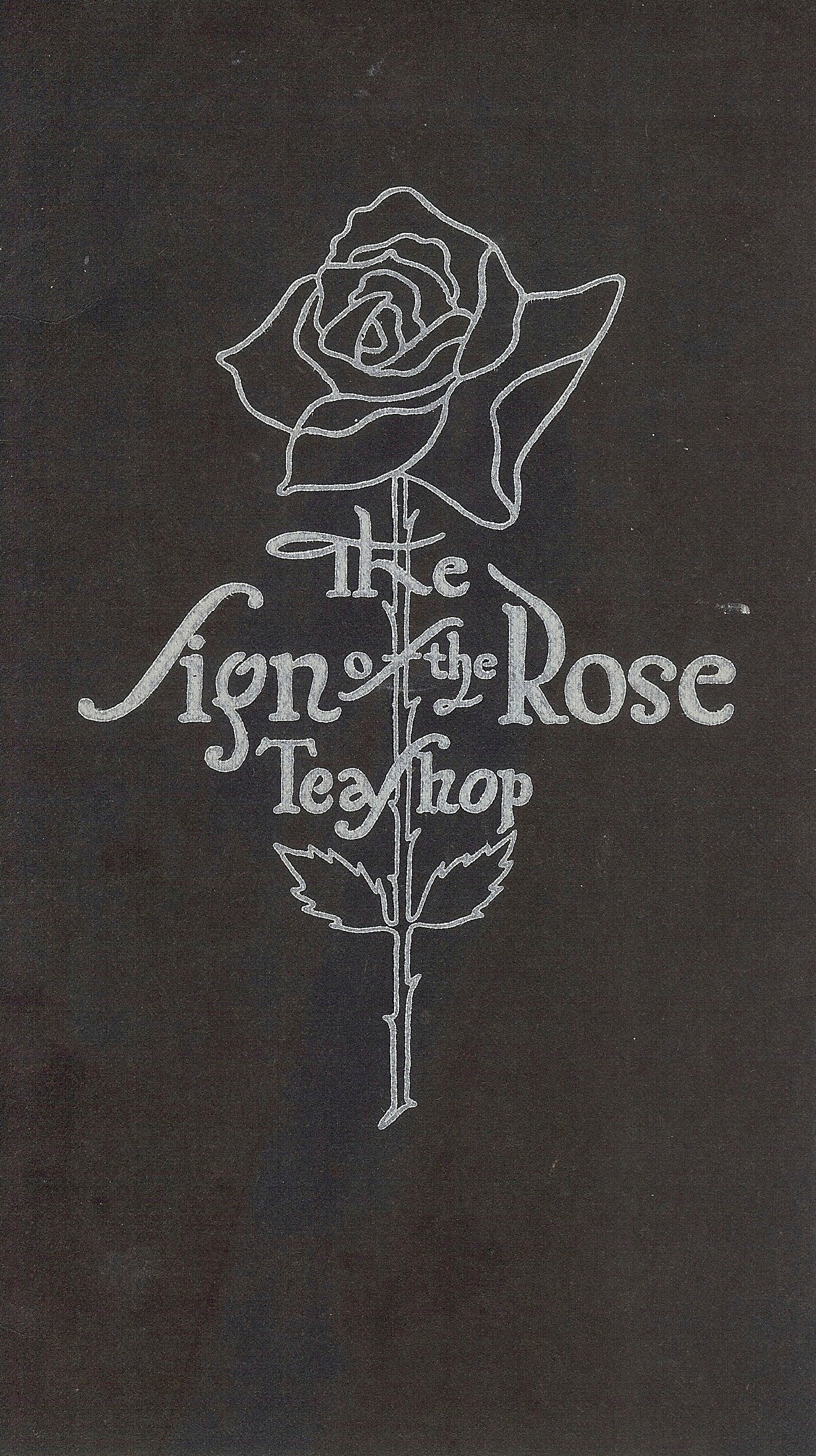At the Sign of the Rose

The tea room craze came to Portland just as prohibition appeared on the horizon. A tea room was a place for women—not exclusively, but most especially—to socialize over a hot beverage and a light meal. Tea rooms were a fixture of downtown city life through the 1920s and into the 1930s. They were fond of the term “dainty,” and the use of that term helped keep the riffraff (males) away.
One of the early and notable Portland establishments was the Sign on the Rose, run by Mrs. Maude Reeves Bushnell, which opened March 15, 1915. It was soon a favorite of the smart social set. Tea rooms characteristically were located in downtown department store districts, where they were respites for footsore shoppers. The Sign of the Rose was located on the fifth floor of the Broadway-Yamhill Building at the northwest corner of those downtown streets, and within four short blocks of Meier & Frank, Olds, Wortman, and King, and Lipman, Wolfe & Company, the city’s leading department stores. In 1922, it began serving an early evening dinner; Bushnell said that the shop “is noted among those who appreciate unusually delicious foods served in an atmosphere of quiet and harmony.”
By the late 1920s the Sign of the Rose had relocated to the eighth floor of the still-extant Woodlark Building on SW Alder at Ninth. It moved again in October 1929, to the fourth floor of the (also still extant) Alderway Building, on Broadway at Alder. This put it absolutely dead center of the retail core, and just as the leading store, Meier & Frank, was about to complete construction of the final portion of its block-square, thirteen-floor emporium.
 |
| Menu from November 1, 1935 |
The redoubtable Maude Reeves had married Herbert W. Bushnell, a salesman for Portland Flouring Mills, in 1902. They were socially active, and Maude was elected vice president of the new Irvington Park Club in 1914. By the early 1920s, the Bushnells lived in Laurelhurst, but something happened in the next decade. In February 1934, Mrs. Bushnell married Charles Arnold Baer in San Francisco. Herbert W. Bushnell died in July 1934, and his obituary notes four children, but no wife; Mrs. Bushnell continued the tea shop under her well-known (first) married name.
 |
| Oregonian Dec. 15, 1930 |
But the Depression was about to fall, prohibition was about to be repealed, and the tea room concept was fading. The Sign of the Rose seems to have been healthy through much of the decade, but things were changing. On March 10, 1935, the Sunday Oregoniannoted the twentieth anniversary of the shop. “The Sign of the Rose is believed to have been one of the first tea shops in the country and is one of the oldest eating places in Portland operating under the same ownership and management.” When it opened, Maude cooked, baked, and served; by 1935, she supervised fifty employees. While it was long an immensely popular place for clubs and clubwomen to meet and eat, by the end of 1937, it was gone.
